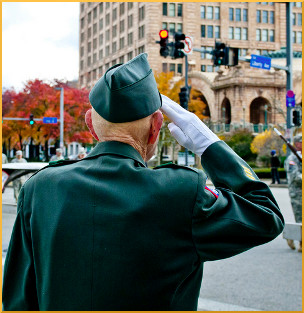
Compared to some other countries, America cares well for its military veterans—which is similar to being the prettiest corpse in the morgue, because any illusion of superiority is only relative. In absolute terms however, vets often find that service in the armed forces is a ticket to oblivion. Some can never get their lives back on track, the suicide rate is alarming, and an astonishing number of veterans also become part of the homeless demographic.
This is not to say that all veterans should be given free everything, forever. But what they are entitled to, they should not be cheated out of. A veteran should be returned to civilian society in a condition as close as possible to the state of well-being and functionality that he or she enjoyed before signing up. David Finkel wrote for The New Yorker:
If the studies prove correct, the wars in Iraq and Afghanistan have created roughly five hundred thousand mentally wounded American veterans.
Two causative factors are blamed: Post Traumatic Stress Disorder, which is said to affect between 20 and 30 percent of returning vets; and Traumatic Brain Injury. Dr. Mark Gordon believes that it’s all of a piece, and all traceable to TBI. Small, unrecognized, repeated concussions disrupt the body’s production of hormones, and the results are “depression, anxiety, nightmares, memory problems, personality changes, [and] suicidal thoughts.” For these patients, it very much looks like interventional endocrinology should be the VA’s main focus, rather than narcotics, anti-depressants, anti-psychotics, and other drugs of that kind.
It seems like pharmaceutical corporations, not veterans, are the main beneficiaries of VA policy. The trend is even more pronounced among active duty personnel, who appear to be insanely over-prescribed. For the New York Times, Richard A. Friedman wrote:
The number of prescriptions written for potentially habit-forming anti-anxiety medications—like Valium and Klonopin—rose 713 percent between 2005 and 2011. The use of sedating anticonvulsants—Topamax, Neurontin and Lyrica—increased 996 percent during this period.
There is an analogy, perhaps, between the military’s use of psychoactive drugs and the practice of pumping athletes full of steroids so they can continue to compete despite physical pain; athletes—and also soldiers—whose performance is chemically enhanced in this way may, however, unwittingly sustain more serious injuries as a result.
The last few words of that sentence are a big part of the problem. A soldier needs to be alert, not sedated. A soldier is in an environment where anxiety is entirely appropriate, and medicating it away can create a dangerous degree of relaxation that leads to more and worse injuries.
Mental illness is often tied to homelessness, and we know by now that the number of homeless vets is staggering:
Although flawless counts are impossible to come by… the U.S. Department of Housing and Urban Development (HUD) estimates that 49,933 veterans are homeless on any given night… About 1.4 million other veterans, meanwhile, are considered at risk of homelessness due to poverty, lack of support networks, and dismal living conditions in overcrowded or substandard housing.
For some reason the best numbers on incarcerated veterans are about ten years old, and even then, about 140,000 veterans were in state and federal prisons. Here is an interesting piece of information:
Combat service was not related to prevalence of recent mental health problems. Just over half of both combat and non-combat veterans reported any history of mental health problems.
There seems to be a revolving door between the military, the prison system, and homelessness. Kids who grow up homeless are attracted to the military life because it provides a living wage, structure, and a place to belong. For a long time, it was traditional for judges to give youthful offenders the choice between jail and enlistment. Some discharged veterans do crime because their brains are too messed up to have good judgment, or because poverty seems to offer no other alternative. Homeless vets wind up in jail. Vets who get out of jail wind up on the streets. Here are more details:
Veterans between the ages of 18 and 30 are twice as likely as adults in the general population to be homeless, and the risk of homelessness increases significantly among young veterans who are poor.
About 53% of individual homeless veterans have disabilities, compared with 41% of homeless non-veteran individuals.
Homeless veterans tend to experience homelessness longer than their non-veteran peers: Veterans spend an average of nearly six years homeless, compared to four years reported among non-veterans.
The average wait to get a disability claim processed is now eight months. Payments range from $127/month for a 10% disability to $2,769 for a full disability.
All these factors contribute to paint a very unflattering picture of the human misery behind America’s military might. Vets have the right to expect the help they need, and we can do better.
Source: “The Return,” NewYorker.com, 09/09/13
Source: “Wars on Drugs,” NYTimes.com, 04/06/13
Source: “Background and Statistics,” NCHY.org
Source: “Veteran Homelessness Facts,” Greendoors.org
Image by The U.S. Army
